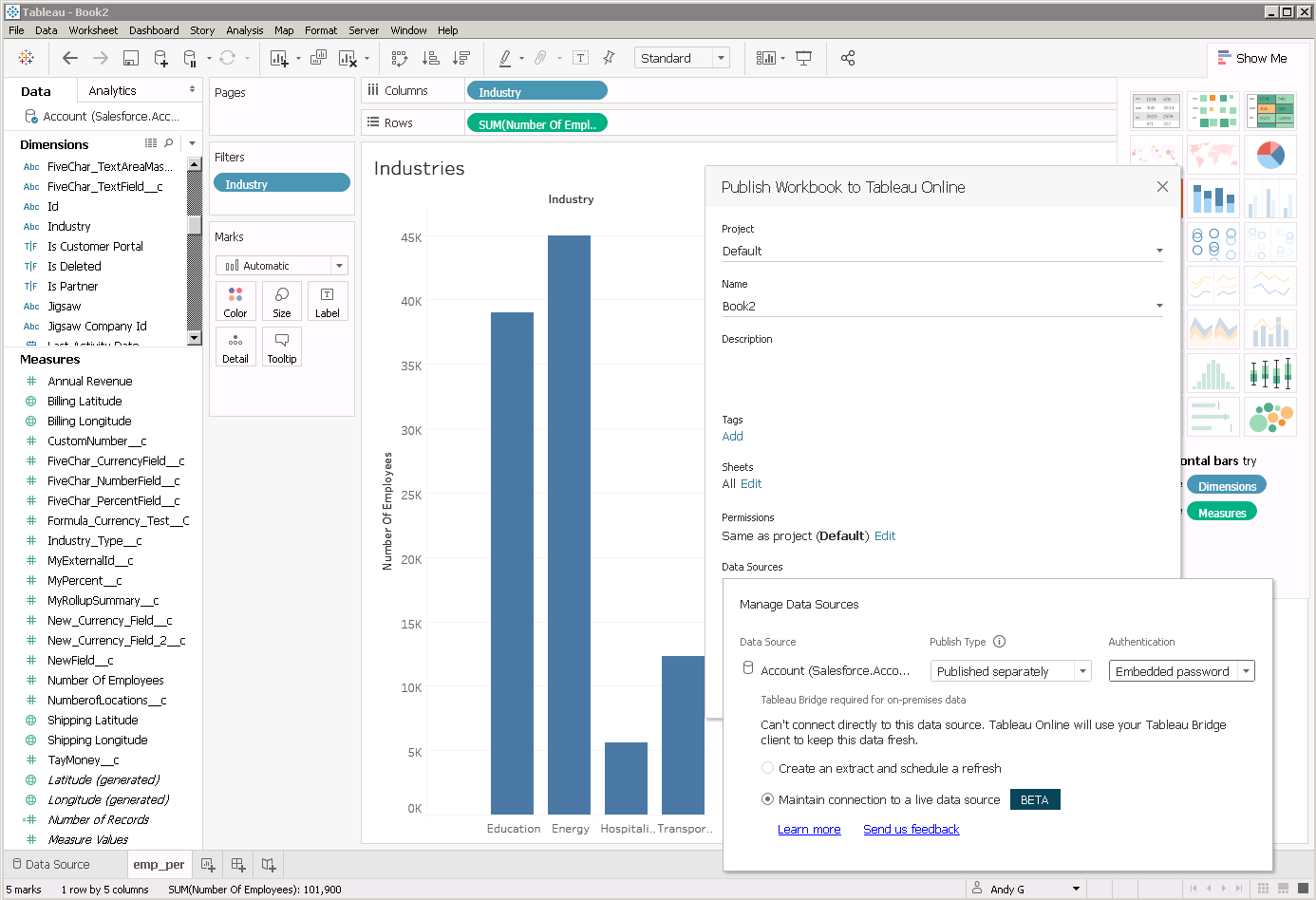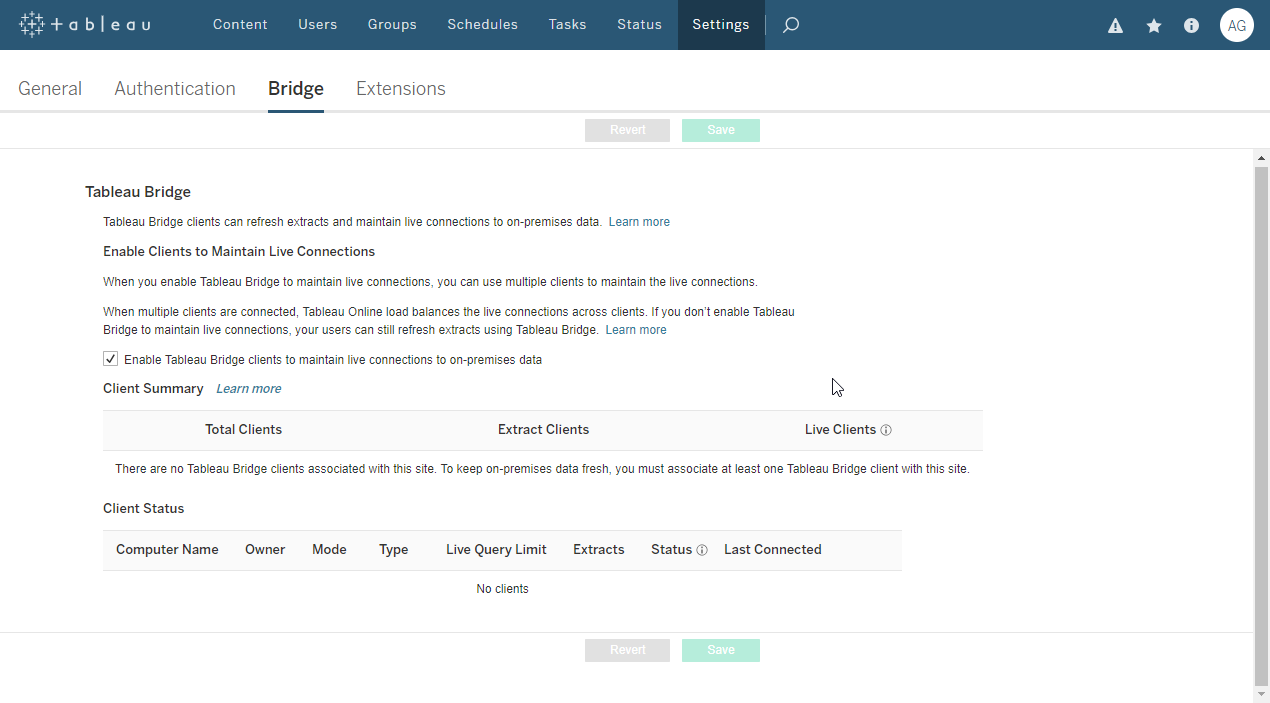Discover how a bimodal integration strategy can address the major data management challenges facing your organization today.
Get the Report →Establish a Live Connection with IBM Cloud Object Storage Data using Tableau Bridge
The CData ODBC Driver for IBM Cloud Object Storage enables you to integrate live IBM Cloud Object Storage data into Tableau Cloud dashboards using the Tableau Bridge.
The Tableau Bridge enables you to publish dashboards to Tableau Cloud while maintaining live connectivity with any data source. In this article, you will use the Tableau Bridge to maintain data freshness in a published workbook by listening for changes in the underlying IBM Cloud Object Storage data.
The CData ODBC drivers offer unmatched performance for interacting with live IBM Cloud Object Storage data in Tableau Cloud due to optimized data processing built into the driver. When you issue complex SQL queries from Tableau Cloud to IBM Cloud Object Storage, the driver pushes supported SQL operations, like filters and aggregations, directly to IBM Cloud Object Storage and utilizes the embedded SQL engine to process unsupported operations (often SQL functions and JOIN operations) client-side. With built-in dynamic metadata querying, you can visualize and analyze IBM Cloud Object Storage data using native Tableau data types.
Connect to IBM Cloud Object Storage as an ODBC Data Source
If you have not already, first specify connection properties in an ODBC DSN (data source name). This is the last step of the driver installation. You can use the Microsoft ODBC Data Source Administrator to create and configure ODBC DSNs.
Register a New Instance of Cloud Object Storage
If you do not already have Cloud Object Storage in your IBM Cloud account, follow the procedure below to install an instance of SQL Query in your account:
- Log in to your IBM Cloud account.
- Navigate to the page, choose a name for your instance and click Create. You will be redirected to the instance of Cloud Object Storage you just created.
Connecting using OAuth Authentication
There are certain connection properties you need to set before you can connect. You can obtain these as follows:
API Key
To connect with IBM Cloud Object Storage, you need an API Key. You can obtain this as follows:
- Log in to your IBM Cloud account.
- Navigate to the Platform API Keys page.
- On the middle-right corner click "Create an IBM Cloud API Key" to create a new API Key.
- In the pop-up window, specify the API Key name and click "Create". Note the API Key as you can never access it again from the dashboard.
Cloud Object Storage CRN
If you have multiple accounts, you will need to specify the CloudObjectStorageCRN explicitly. To find the appropriate value, you can:
- Query the Services view. This will list your IBM Cloud Object Storage instances along with the CRN for each.
- Locate the CRN directly in IBM Cloud. To do so, navigate to your IBM Cloud Dashboard. In the Resource List, Under Storage, select your Cloud Object Storage resource to get its CRN.
Connecting to Data
You can now set the following to connect to data:
- InitiateOAuth: Set this to GETANDREFRESH. You can use InitiateOAuth to avoid repeating the OAuth exchange and manually setting the OAuthAccessToken.
- ApiKey: Set this to your API key which was noted during setup.
- CloudObjectStorageCRN (Optional): Set this to the cloud object storage CRN you want to work with. While the connector attempts to retrieve this automatically, specifying this explicitly is recommended if you have more than Cloud Object Storage account.
When you connect, the connector completes the OAuth process.
- Extracts the access token and authenticates requests.
- Saves OAuth values in OAuthSettingsLocation to be persisted across connections.
When you configure the DSN, you may also want to set the Max Rows connection property. This will limit the number of rows returned, which is especially helpful for improving performance when designing reports and visualizations.
Add IBM Cloud Object Storage Data to a Dashboard
- From a new workbook, click Data -> New Data Source -> Other Databases (ODBC).
Select the CData Data Source Name (for example: CData IBMCloudObjectStorage Source). - In the Database menu, select CData.
- In the Table box, enter a table name or click New Custom SQL to enter an SQL query. This article retrieves the Objects table.
- Drag the table onto the join area. At this point, you can include multiple tables, leveraging the built-in SQL engine to process complex data requests.
- Click the tab for your worksheet. Columns are listed as Dimensions and Measures, which you can drag and drop onto the dashboard to create visualizations.
![A connection to a single table. (Salesforce is shown.)]()
Set Up Tableau Bridge as a Service
- In the Server menu, select Start Tableau Bridge Client.
- Sign in to the Tableau Bridge using a site admin level account.
- If prompted, select the Tableau Cloud site where you want to publish live data. The bridge client will open and is accessible from the system tray.
- By default, the Tableau Bridge client is set to Application mode. Select 'Switch to service' to enable Tableau Bridge to handle live connections.
- Log in to your Tableau Cloud site as an administrator.
- From your site, click Settings, then Bridge.
![The Tableau Bridge settings within Tableau Cloud.]()
- In the Bridge settings, under Enable Clients to Maintain Live Connections, check the box labeled 'Enable Tableau Bridge clients to maintain live connections to on-premises data.'
Publish a Dashboard Containing the Live Data Source
Having configured both the Tableau Bridge and Tableau Cloud to enable live data connections, you can now publish your workbook to Tableau Cloud. From the Server menu, select Publish Workbook.

After choosing the workbook name and project that you wish to publish to, configure the deployment so that the CData ODBC driver for IBM Cloud Object Storage is embedded in your workbook as a separate, live data source.
- Under Data Sources, select the option to Edit the embedded data sources in the workbook.
- Change Publish Type to 'Published separately,' then select a desired means of authentication.
- Last, select 'Maintain connection to a live data source' and click the green Publish Workbook button.
The published workbook now updates alongside the underlying IBM Cloud Object Storage data. From a published dashboard, simply click the Refresh button to reflect the most recent changes.







